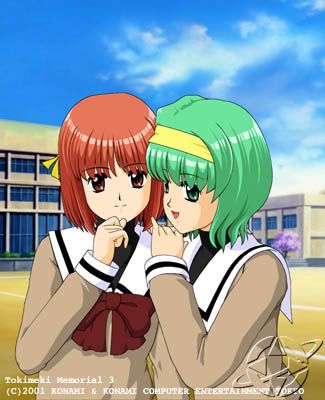
Kickstarter is seemingly everywhere lately, and with games and related projects like Ouya (an in development console using the free-to-play business model for all supported titles) taking in pledges hand over fist, that's not likely to change any time soon. While the popular crowdfunding platform is still young and fresh, the idea of "crowdsourcing," Kickstarter-speak for fans putting up capital to bring projects to life, isn't as new to video games as you might believe.
Back in December 2000, Konami Japan announced a partnership with Japanese investment banks Monex Group and Mizuho Securities to offer what was billed as "The Game Fund." A new kind of investment fund, Game Fund was set up to produce and market two PlayStation 2 installments of the hugely popular Tokimeki Memorial dating-simulation series: Tokimeki Memorial 3 and a new title that was later revealed to be Tokimeki Memorial Girl's Side.
Japanese fans and investors were offered the ability to buy units of Game Fund at a price of ¥10,000 each, with a minimum total investment of ¥100,000 — close to $1,000 U.S. at the time. In a foreshadowing of Kickstarter's "reward tiers," a contribution above the minimum put a fan in the credits roll of the games, and doubling the minimum with an investment of ¥200,000 or more got the investor an exclusive version of Tokimeki Memorial 3's Limited Edition.
Unlike Kickstarter's "backers" system, where supporters risk nothing beyond the amount they choose to contribute, fans who bought into The Game Fund became true investors who could see gains based on the titles' performance. If both Tokimeki titles broke a certain number of copies sold, the investors would make money on the deal in addition to getting the games made in the first place
Mizuho estimated that combined sales of 800,000 for both Tokimeki Memorial games would net investors a profit of ¥5,500 per unit, so that even a minimum investment would result in a ¥55,000 return. But the opposite was also true: if the titles underperformed, investors would lose money; although, these losses were capped at ¥5,000 per unit.
 Konami also saw the fund as a way of increasing word-of-mouth and excitement for the games. Senior managing director Toshiro Tateno said during a press conference, "Those investing in the production of the software would develop greater affection for the games themselves, and that may have the side effect of producing greater sales." The fund itself was successful even if it didn't hit Konami's original ¥1.2 billion goal: 2,738 investors stepped up to secure the titles, contributing a total of ¥770 million. That's an average of around ¥281,000 per investor, nearly $7 million in 2000 exchange rates.
Konami also saw the fund as a way of increasing word-of-mouth and excitement for the games. Senior managing director Toshiro Tateno said during a press conference, "Those investing in the production of the software would develop greater affection for the games themselves, and that may have the side effect of producing greater sales." The fund itself was successful even if it didn't hit Konami's original ¥1.2 billion goal: 2,738 investors stepped up to secure the titles, contributing a total of ¥770 million. That's an average of around ¥281,000 per investor, nearly $7 million in 2000 exchange rates.
Despite their best efforts, though, this success didn't carry over to the games themselves. Changes to the main series in Tokimeki Memorial 3 — most notably, a new 3D engine where the older games were made in traditional 2D — were so unpopular that the game floundered at retail. This failure nearly killed the franchise: It didn't see a fourth entry until 2009 largely because fans' money was used to make a game that the fans themselves didn't like. The original Girl's Side didn't quite hit it big, either; although, it did earn two sequels and lots of merchandising tie-ins. The failure to perform meant that investors likely lost money in the end.
Is there a lesson here for fans contributing to Kickstarters for games today? There could be. In the case of a Kickstarter project, there's no hoping for a profit for backers, so they don't need to worry about how much a game-related project eventually sells. But there is the question of whether or not the project will come out on time — or at all.
This was a known quantity in the case of The Game Fund; Konami is a sizable publisher, not just a developer, and it wouldn't abandon a franchise that was selling to the extent Tokimeki Memorial was prior to the third game. Also, instead of a return on investment, Kickstarters have offered bonus rewards ranging from T-shirts at the low end to lunch with the developers for big backers, and that could limit fans' disappointment if their game of choice fails to deliver.
VentureBeat's mission is to be a digital town square for technical decision-makers to gain knowledge about transformative enterprise technology and transact. Learn More
